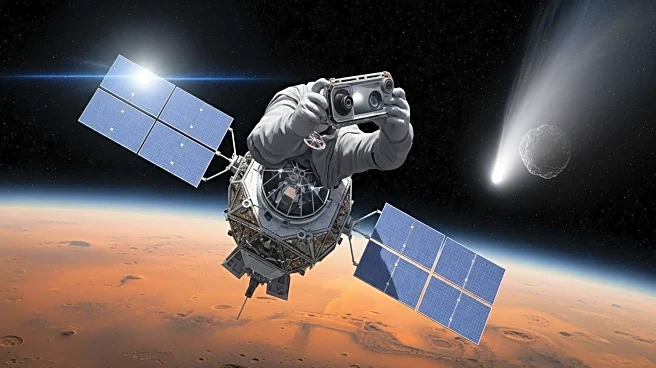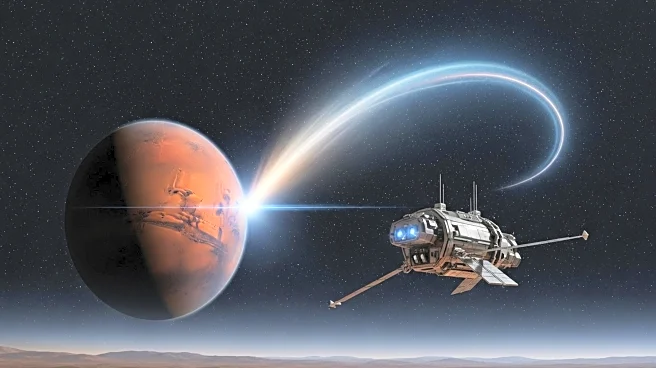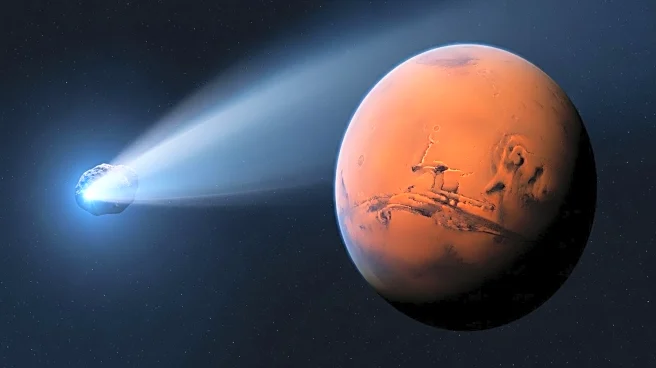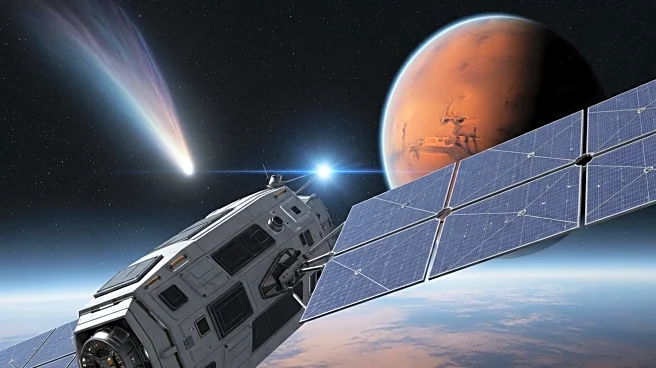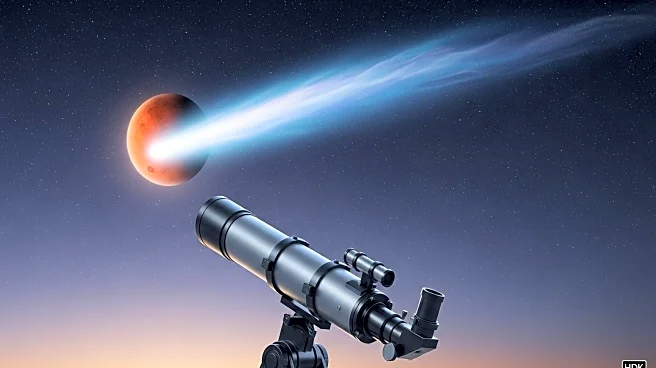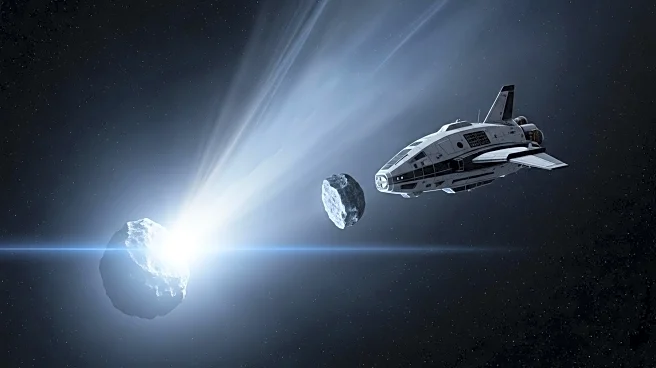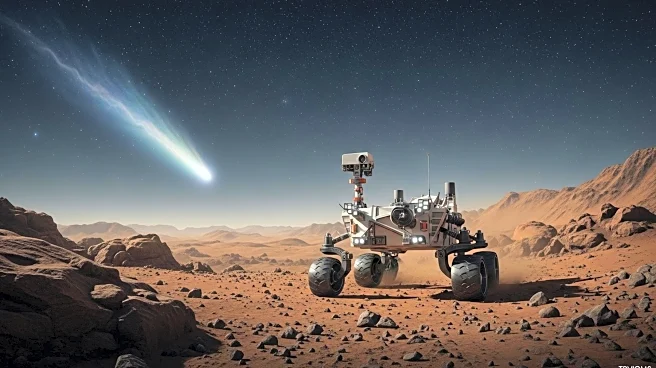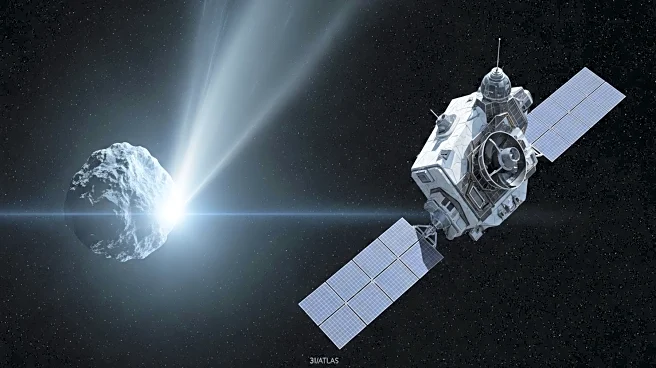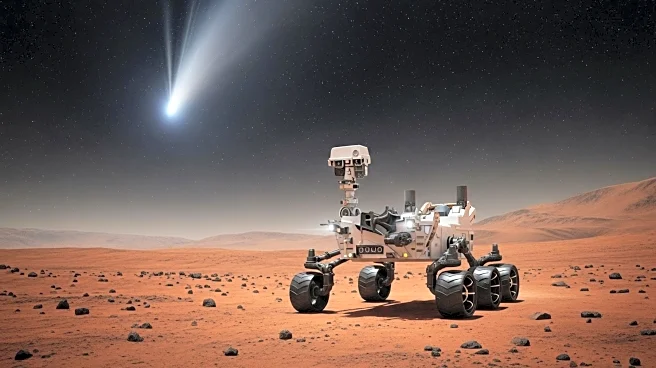What's Happening?
Astronomers have captured images of the interstellar comet 3I/ATLAS as it passed by Mars, using the European Space Agency's Mars orbiters, ExoMars and Mars Express. The comet, only the third interstellar object recorded in the solar system, was observed on October 3. The observation was challenging due to the comet's faintness, being 10,000 to 100,000 times dimmer than typical targets. The comet was approximately 18.6 million miles away from the orbiters when the images were taken. Scientists are analyzing the data to understand the comet's composition, which includes an icy-rocky nucleus surrounded by a coma of gas and dust.
Why It's Important?
The observation of 3I/ATLAS provides a unique opportunity to study an interstellar object, offering insights into the materials and conditions beyond our solar system. Understanding the composition and behavior of such comets can enhance knowledge of cosmic phenomena and the formation of celestial bodies. This research could also inform future missions aimed at exploring interstellar space, contributing to the broader field of astronomy and space exploration.
What's Next?
ESA astronomers plan to observe 3I/ATLAS through the Jupiter Icy Moons Explorer (Juice) as it makes its closest approach to the sun in November. Continued analysis of the data from ESA's orbiters will help determine the comet's exact composition. The findings may lead to new hypotheses about the origins and characteristics of interstellar objects.

